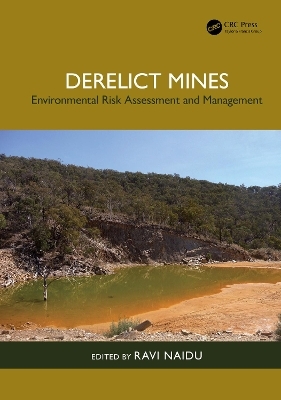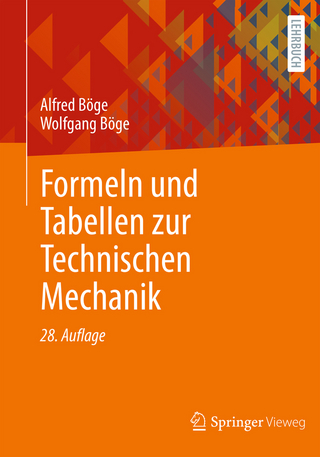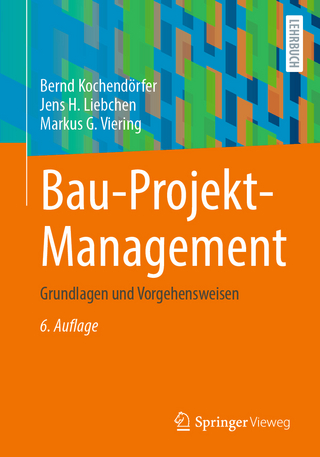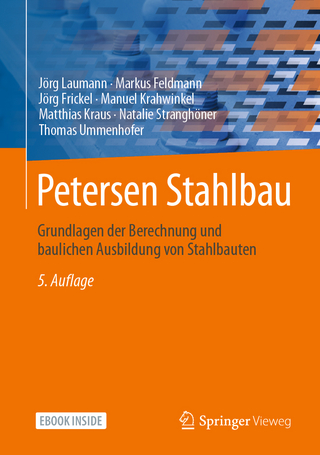
Derelict Mines
CRC Press (Verlag)
978-1-138-30662-2 (ISBN)
Mine areas left behind by companies that no longer exist are defined as derelict mines – those that were operated and closed at a time when most countries did not have adequate regulations requiring rehabilitation of the impacted mine areas. This book provides unique information on the extent and severity of derelict mines’ impact on environmental degradation and human and environmental health. It examines the nature of derelict mines, short-term and long-term risks to sensitive receptors, tools for monitoring and prioritizing risks, and technological advances for rehabilitation. This book considers a risk-based approach to managing derelict mines, which is reliable and cost-effective.
FEATURES
Provides fundamental information on derelict mines and their inventory in different countries
Explains risk-based management of derelict mines and the importance of community perspectives as a reliable and cost-effective method
Identifies ownership and liability issues through many case studies in Australia and other countries that must deal with the remediation of derelict mines
Presents remediation, assessment, and predictive tools for managing pit lakes
Helps readers set standards, regulatory measures, and policies related to mine closures
This book is for engineers and professionals who work in mining, geology, chemistry, mineralogy, geotechnics, and hydrogeology and deal with industrial site management, waste management, mine closures, mine site reclamation, derelict mine remediation, and mine revegetation. It is also an insightful resource for graduate students, academics, and researchers focused on these courses.
Ravi Naidu is the Chief Executive and Managing Director of the Cooperative Research Centre for Contamination Assessment and Remediation of the Environment and Laureate Professor and Founding Director of the Global Centre for Environmental Remediation at the University of Newcastle. He has been a research scientist in environmental contaminants, toxicology, bioavailability and remediation for over 25 years. He has co-authored over 850 technical publications and co-edited 16 books in the field of soil and environmental sciences, including field remediation of contaminated sites. Since 1994 Ravi has worked with scientists from the United States, Europe and Asia on environmental contamination, including recent arsenic poisoning in Bangladesh, India and China, with this collaboration leading to extensive research as well as the training of 5,000 environmental managers. Ravi was awarded a Gold Medal in environmental science in 1998 by Tamil Nadu Agricultural University, elected as a Fellow of the Soil Science Society of America in 2000, a Fellow of the Soil Science Society of New Zealand in 2004, a Fellow of the American Society of Agronomy in 2006, a Fellow of the prestigious American Association for the Advancement of Science in 2013, a Fellow of the Royal Australian Institute of Chemistry in 2017, a Fellow of the Australian Academy of Technological Sciences and Engineering, a Foreign Fellow of the Indian Academy of Agricultural Science in 2021 and a Foreign Fellow of the New Zealand Academy of Science in 2021. In 2012 Ravi was chosen as a winner of the Soil Science Society of America’s International Soil Science Award. In 2023, Ravi was presented with the European Geosciences Union Alina Kabata-Pendias Medal and also the Food and Agriculture of the United Nations World Soil Prize – the Glinka Award. He has also been Chair of the Standards Australia Technical Committee on Sampling and Analyses of Contaminated Soils (1999–2000), Chair of the International Union of Soil Sciences Commission for Soil Degradation Control, Remediation and Reclamation (2002–2010) and President of the International Society on Trace Element Biogeochemistry (2005–2007).
1. Minerals Industry: Risks, Impacts and Managing Derelict Mines – International Perspective. 2. Balancing Sustainable Development: Assessing Global Environmental Risks in the Mineral Industry Operations. 3. Derelict Mine Sites – Australian Perspective. 4. Managing Orphaned and Abandoned Mines – A Canadian Perspective. 5. Mining Restoration and the Contribution of the Mining Industry to China’s Economic Development over the Past 70 Years. 6. Mining in Colombia: An Opportunity for Better Management of Environmental Impacts. 7. Mine Land Reclamation in India: Policies on Mine Closure and Rehabilitation. 8. Paringin Pit Lake at Coal Mine Site, Indonesia: A Sustainable Post-Mining Pit Lake Model. 9. Abandoned Mines in New Zealand. 10. Mining and Mine Rehabilitation in Peru. 11. Abandoned and Inactive Mines in the Philippines: Current Environmental Conditions, Ongoing Rehabilitation Efforts and Future Opportunities. 12. Abandoned Open Cast Coal Mine Waste in Russia – Emphasizing the Approaches for Ural Region Mine Waste Rehabilitation via Biological Recultivation. 13. Abandoned and Derelict Mines of the Witwatersrand: Reclamation, Restoration and Reparation. 14. Cleaning Up Centuries of Pollution: The UK Approach to Managing Abandoned Mines. 15. Mining in the United States. 16. Mine Wastelands and Abandoned Mines in Zambia. 17. Novel Swampy Forest System as a Strategy to Meet Coal Mine Wastewater Discharge Compliance Requirements in Indonesia. 18. Application of Risk-Based Management Strategies to Legacy Mines. 19. Mount Morgan Mine Site, Queensland – Long-Term Site Management. 20. mineCARE: Managing Contaminated Mine Sites with Advanced Software Tools. 21. Derelict Mine Ownership – Past, Present and Future.
| Erscheinungsdatum | 03.03.2020 |
|---|---|
| Zusatzinfo | 47 Tables, black and white; 27 Line drawings, color; 60 Line drawings, black and white; 14 Halftones, color; 66 Halftones, black and white; 41 Illustrations, color; 126 Illustrations, black and white |
| Verlagsort | London |
| Sprache | englisch |
| Maße | 178 x 254 mm |
| Gewicht | 889 g |
| Themenwelt | Technik ► Bauwesen |
| Technik ► Bergbau | |
| Technik ► Umwelttechnik / Biotechnologie | |
| ISBN-10 | 1-138-30662-2 / 1138306622 |
| ISBN-13 | 978-1-138-30662-2 / 9781138306622 |
| Zustand | Neuware |
| Informationen gemäß Produktsicherheitsverordnung (GPSR) | |
| Haben Sie eine Frage zum Produkt? |
aus dem Bereich


